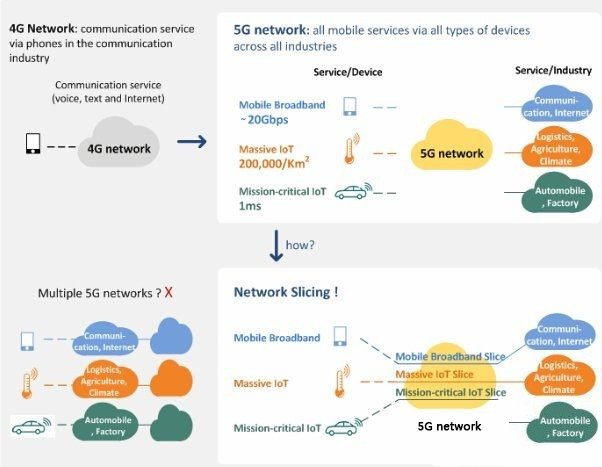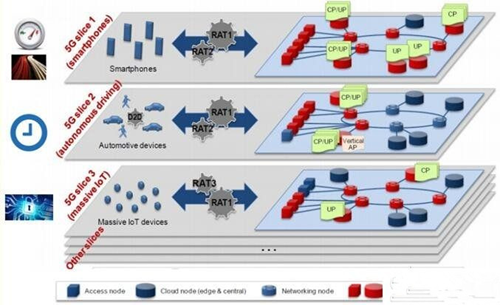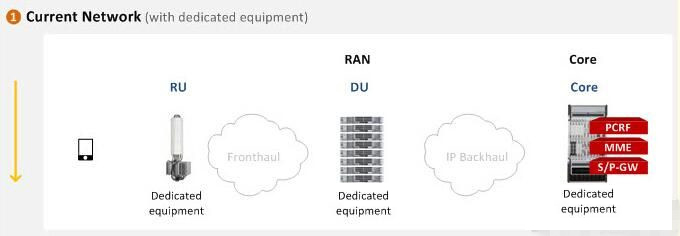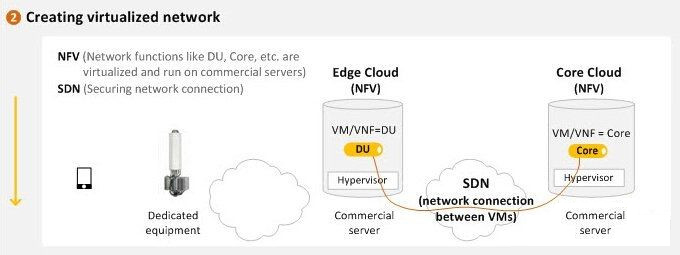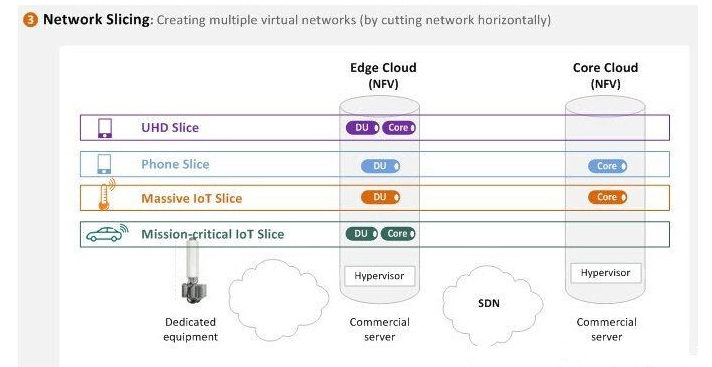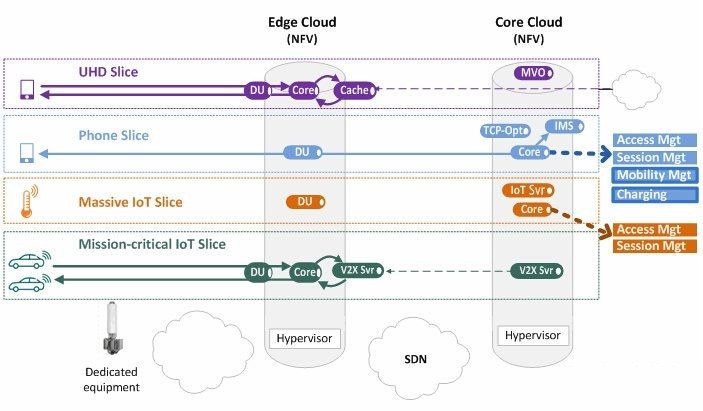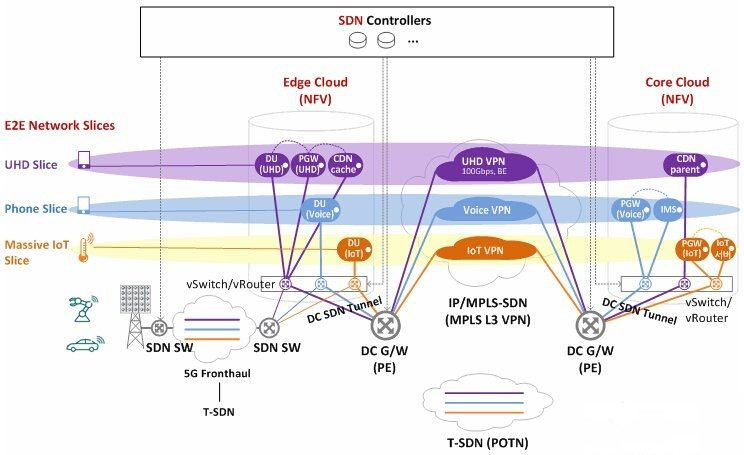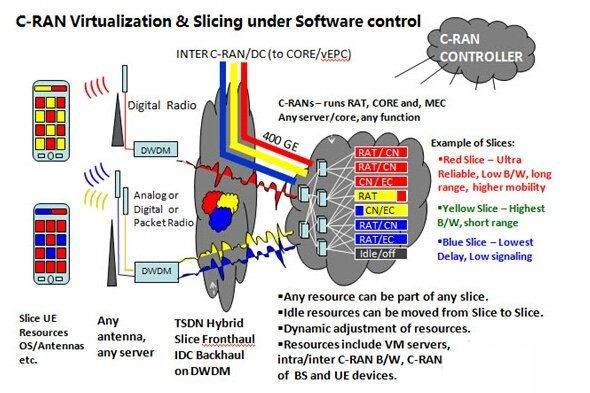5G and Network Slicing
When 5G is widely mentioned, Network Slicing is the most discussed technology among them. Network operators such as KT, SK Telecom, China Mobile, DT, KDDI, NTT, and equipment vendors such as Ericsson, Nokia, and Huawei all believe that Network Slicing is the ideal network architecture for the 5G era.
This new technology allows operators to split multiple virtual end-to-end networks in a hardware infrastructure, and each Network Slice is logically isolated from the device, access network, transport network and core network to meet the different characteristics of various types of services.
For each Network Slice, dedicated resources such as virtual servers, network bandwidth, and quality of service are fully guaranteed. Since slices are isolated from each other, errors or failures in one slice will not affect the communication of other slices.
Why does 5G need Network Slicing?
From the past to the current 4G network, mobile networks mainly serve mobile phones, and generally only do some optimization for mobile phones. However, in the 5G era, mobile networks need to serve devices of various types and requirements. Many of the application scenarios mentioned include mobile broadband, large-scale iot, and mission-critical iot. They all need different types of networks and have different requirements in mobility, accounting, security, policy control, latency, reliability and so on.
For example, a large-scale iot service connects fixed sensors to measure temperature, humidity, rainfall, etc. There is no need for handovers, location updates, and other features of the main serving phones in the mobile network. In addition, mission-critical iot services such as autonomous driving and remote control of robots require end-to-end latency of several milliseconds, which is very different from mobile broadband services.
Main Application Scenarios of 5G
Does this mean we need a dedicated network for each service? For example, one serves 5G mobile phones, one serves 5G massive iot, and one serves 5G mission critical iot. We don't need to, because we can use network slicing to split out multiple logical networks from a separate physical network, which is a very cost-effective approach!
Application Requirements for Network Slicing
The 5G network slice described in the 5G white paper released by the NGMN is shown below:
How do we implement end-to-end Network Slicing?
(1)5G wireless access network and core network: NFV
In today's mobile network, the main device is the mobile phone. RAN(DU and RU) and core functions are built from dedicated network equipment provided by RAN vendors. To implement network slicing, Network Function Virtualization (NFV) is a prerequisite. Basically, the main idea of NFV is to deploy the network function software (i.e. MME, S/P-GW and PCRF in the packet core and DU in the RAN) all in the virtual machines on the commercial servers instead of separately in their dedicated network devices. In this way, the RAN is treated as the edge cloud, while the core function is treated as the core cloud. The connection between VMS located at the edge and in the core cloud is configured using SDN. Then, a slice is created for each service (i.e. phone slice, massive iot slice, mission critical iot slice, etc.).
How to implement one of the Network Slicing(I)?
The figure below shows how each service-specific application can be virtualized and installed in each slice. For example, slicing can be configured as follows:
(1)UHD slicing: virtualizing DU, 5G core (UP) and cache servers in the edge cloud, and virtualizing 5G core (CP) and MVO servers in the core cloud
(2) Phone slicing: virtualizing 5G cores (UP and CP) and IMS servers with full mobility capabilities in the core cloud
(3) Large-scale iot slicing (e.g., sensor networks) : Virtualizing a simple and lightweight 5G core in the core cloud has no mobility management capabilities
(4) Mission-critical iot slicing: Virtualizing 5G cores (UP) and associated servers (e.g., V2X servers) in the edge cloud for minimizing transmission latency
So far, we have needed to create dedicated slices for services with different requirements. And the virtual network functions are placed in different locations in each slice (i.e., edge cloud or core cloud) according to different service characteristics. In addition, some network functions, such as billing, policy control, etc., may be necessary in some slices, but not in others. Operators can customize network slicing the way they want, and probably the most cost-effective way.
How to implement one of the Network Slicing(I)?
(2) Network slicing between edge and core cloud: IP/MPLS-SDN
Software defined networking, although a simple concept when it was first introduced, is becoming increasingly complex. Taking the form of Overlay as an example, SDN technology can provide network connection between virtual machines on the existing network infrastructure.
End-to-end Network Slicing
Firstly, we look at how to ensure that the network connection between the edge cloud and the core cloud virtual machines is secure. The network between the virtual machines needs to be implemented based on IP/MPLS-SDN and Transport SDN. In this paper, we focus on IP/MPLS-SDN provided by router vendors. Ericsson and Juniper both offer IP/MPLS SDN network architecture products. The operations are slightly different, but the connectivity between SDN-based VMS is very similar.
In the core cloud are virtualized servers. In the hypervisor of the server, run the built-in vRouter/vSwitch. The SDN controller provides the tunnel configuration between the virtualized server and the DC G/W router (the PE router that creates the MPLS L3 VPN in the cloud data center). Create SDN tunnels (i.e. MPLS GRE or VXLAN) between each virtual machine (e.g. 5G IoT core) and DC G/W routers in the core cloud.
The SDN controller then manages the mapping between these tunnels and the MPLS L3 VPN, such as the IoT VPN. The process is the same in the edge cloud, creating an iot slice connected from the edge cloud to the IP/MPLS backbone and all the way to the core cloud. This process can be implemented based on technologies and standards that are mature and available so far.
(3) Network slicing between edge and core cloud: IP/MPLS-SDN
What remains now is the mobile fronthawall network. How do we cut this mobile fronthold network between the edge cloud and the 5G RU? First of all, the 5G front-haul network must be defined first. There are some options under discussion (e.g., introducing a new packet-based forward network by redefining the functionality of DU and RU), but no standard definition has been made yet. The following figure is a diagram presented in the ITU IMT 2020 working group and gives an example of a virtualized fronhaul network.
Example of 5G C-RAN Network Slicing by ITU Organization
Post time: Feb-02-2024


